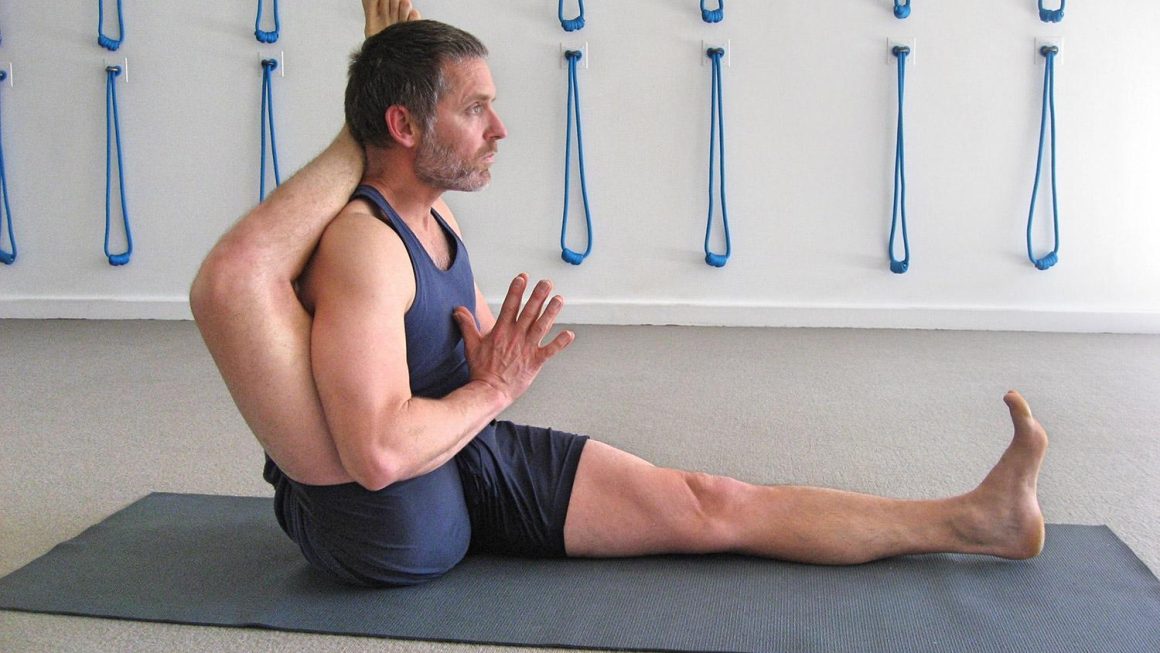Unlocking Relief: 13 Stretches for Lower Back Pain
Lower back pain is a common ailment that can turn even the simplest daily activities into uncomfortable endeavors. Whether it’s the result of sitting at a desk for hours, lifting heavy objects incorrectly, or simply the toll of everyday wear and tear, many people find themselves seeking effective solutions to regain their mobility and ease their discomfort. Fortunately, relief may be closer than you think. In this article, we present 13 carefully curated stretches designed to alleviate tension, improve flexibility, and strengthen the muscles that support your lower back. By incorporating these gentle yet effective movements into your routine, you can take meaningful steps toward a healthier, more pain-free life. Let’s explore these stretches and discover how they can help you on your journey to a more comfortable back.
Understanding Lower Back Pain and Its Causes
Lower back pain is a prevalent issue affecting millions worldwide, and understanding its various causes is essential for effective management. Commonly, this pain can stem from muscular strains, ligament sprains, or conditions like herniated discs. Posture plays a critical role, as poor alignment can lead to undue stress on the spine. Additionally, lifestyle factors such as obesity or sedentary habits contribute significantly to the risk of experiencing lower back pain. Other underlying issues, such as arthritis, osteoporosis, or infections, may also manifest as discomfort in this region, highlighting the importance of recognizing the symptoms associated with these conditions.
To better grasp the nuances of lower back pain, it’s important to consider the varied factors affecting individuals. These include, but are not limited to:
- Aging: As we get older, our bodies can lose strength and flexibility, increasing pain likelihood.
- Inactivity: Lack of movement can weaken the muscles that support the spine, making it more prone to injury.
- Heavy lifting: Improper techniques when handling heavy objects can lead to strains.
- Stress and anxiety: Emotional stress can cause muscle tension, exacerbating pain.
Recognizing these factors can help individuals take proactive steps to alleviate their discomfort and prevent future episodes of pain.
Essential Stretches to Alleviate Discomfort
Experiencing discomfort in the lower back can be debilitating, but incorporating specific stretches into your routine can significantly alleviate tension and improve flexibility. Hip Flexor Stretch is an excellent choice, as it targets the muscles that can pull on the lower back when tight. To perform this stretch, kneel on one knee with the other foot in front, keeping your back straight. Gently push your hips forward while keeping your pelvis tucked under—hold this position for 20-30 seconds, then switch sides. Another effective stretch is the Child’s Pose, a calming position that elongates the spine. Begin in a kneeling position, then sit back onto your heels while stretching your arms forward on the floor, letting your forehead rest down. This gentle stretch helps release tension in the lower back and provides a moment of relaxation.
Another transformative stretch is the Supine Hamstring Stretch, which can release the upper leg muscles and prevent added strain on the lower back. To do this stretch, lie on your back with one leg raised; use a strap or towel to gently pull the leg towards you, keeping it straight. Hold for 20-30 seconds before switching legs. Additionally, the Knees-to-Chest Stretch can ease discomfort. While lying on your back, draw both knees into your chest, wrapping your arms around them, and rock gently side to side. This not only stretches the lower back but also helps mobilize the pelvis. Incorporating these stretches into your daily routine may lead to lasting relief and a greater sense of wellness.
Incorporating Stretching into Your Daily Routine
Integrating stretching into your daily activities can significantly alleviate discomfort in your lower back. To seamlessly blend these practices into your routine, consider choosing specific times during the day that naturally lend themselves to stretching. For example, you might dedicate a few minutes each morning after you wake up to prepare your body for the day ahead. Alternatively, after spending time at your desk or completing designated activities, utilize brief stretching sessions as a way to break up prolonged periods of sitting or standing. Aim to engage in stretches that emphasize spinal flexibility and muscle relaxation.
To get started, here are some simple stretches you can incorporate throughout your day:
- Cat-Cow stretch – Perfect for warming up the spine
- Child’s Pose – A restorative pose that stretches the lower back
- Seated Forward Bend – Helps stretch the hamstrings and lower back
Consider keeping a consistent schedule: try setting a reminder to take stretching breaks at intervals. Below is a suggested weekly stretching schedule:
| Day | Stretch Duration | Focus Area |
|---|---|---|
| Monday | 5 minutes | Hip Flexors |
| Tuesday | 10 minutes | Lower Back |
| Wednesday | 7 minutes | Hamstrings |
| Thursday | 5 minutes | Spinal Rotation |
| Friday | 10 minutes | Total Body |
Tips for Maximizing Stretch Effectiveness and Safety
To truly benefit from stretching, pay attention to your body and recognize its limits. Start each session with gentle movements to warm up your muscles; this prepares your body and reduces the risk of injury. When performing stretches, engage in deep, controlled breathing. Inhale deeply before you stretch and exhale as you extend into the stretch. This technique can enhance flexibility and improve your focus, allowing for a more effective session. Keep in mind the importance of holding each stretch for at least 15 to 30 seconds to encourage muscle relaxation and elongation.
It’s vital to consider the environment when stretching. Ensure you are on a flat, comfortable surface that provides enough cushioning, such as a yoga mat or carpet. This helps to prevent slips and strains. Also, be mindful of the surrounding space — remove any obstacles that could cause you to lose your balance. To further enhance safety, you may want to incorporate dynamic stretches before your workout as a warm-up and static stretches afterward for recovery. Always listen to your body; if any stretch causes pain, ease off immediately and consult a professional if discomfort persists.
Q&A
Q&A: 13 Stretches for Lower Back Pain
Q1: Why is stretching important for lower back pain?
A1: Stretching is essential for alleviating lower back pain as it improves flexibility, releases tension in tight muscles, and increases blood flow to the area. This can lead to reduced pain and a greater range of motion, ultimately helping to prevent future discomfort.
Q2: How often should I perform these stretches?
A2: For optimal results, aim to incorporate these stretches into your routine at least three to four times a week. Daily practice can bring even more relief, especially if you’re experiencing acute pain or stiffness.
Q3: Can I do these stretches if I have a severe injury?
A3: If you have a severe injury or chronic condition, it’s crucial to consult with a healthcare professional before starting any stretching routine. They can guide you on what’s safe and appropriate for your specific situation.
Q4: How long should I hold each stretch?
A4: Hold each stretch for 15 to 30 seconds, repeating two to three times. This allows your body to gradually relax into the stretch and enhances its effectiveness.
Q5: Do I need any special equipment to perform these stretches?
A5: Most of the stretches can be performed with minimal or no equipment. However, a yoga mat or towel can provide comfort, and items like a resistance band or strap can assist in certain stretches if needed.
Q6: Are there specific stretches I should focus on for different types of back pain?
A6: Yes, certain stretches may be more beneficial depending on the nature of your pain. For example, stretches like the Cat-Cow may help with stiffness, while the Child’s Pose is excellent for overall relaxation and lengthening of the spine.
Q7: Can these stretches help with sciatica or herniated discs?
A7: While some individuals with sciatica or herniated discs may find relief through gentle stretching, it’s vital to approach with caution and seek professional advice. Targeted stretches like the Piriformis Stretch can be advantageous, but personal guidance is recommended.
Q8: What if I experience pain while stretching?
A8: If you feel sharp or significant pain while stretching, stop immediately. It’s essential to distinguish between discomfort (which is normal) and pain (which may indicate injury). Always listen to your body and consult a professional if pain persists.
Q9: How do I know which stretches to include in my routine?
A9: Start with a few basic stretches from the list, focusing on those that target areas where you feel tightness or discomfort. You can gradually add more as you become comfortable, ensuring a well-rounded approach to back health.
Q10: Can incorporating stretching into my routine prevent lower back pain?
A10: Yes, regular stretching can strengthen the muscles supporting your lower back, improve posture, and increase flexibility, all of which contribute to preventing future instances of back pain. Building this habit can be a proactive way to maintain spinal health.
Q11: Is warming up necessary before I stretch?
A11: Yes! Engaging in a brief warm-up, like a five-minute walk or gentle movements, helps prepare your muscles for stretching, reducing the risk of injury and enhancing the effectiveness of your stretches.
Q12: Can I combine these stretches with other forms of exercise?
A12: Absolutely! Combining stretching with low-impact exercises like walking, swimming, or yoga can provide comprehensive benefits for your lower back and overall health. A balanced approach is key to long-term well-being.
Q13: What’s the takeaway from incorporating these stretches into my lifestyle?
A13: The takeaway is simple yet powerful: by integrating these stretches into your daily routine, you’re investing in your lower back health, enhancing your overall flexibility, reducing pain, and fostering a greater sense of body awareness and well-being.
To Wrap It Up
As we conclude our exploration of these 13 effective stretches for alleviating lower back pain, it’s important to remember that our bodies are unique. What works wonders for one person may need adjustment for another. Listen to your body and take the time to find the stretches that resonate with you, allowing each movement to foster healing and relief. Incorporating these stretches into your daily routine can not only ease discomfort but also enhance your overall well-being.
As you embark on this journey toward a more flexible and pain-free back, be patient with yourself. Progress may come gradually, but with consistency and care, you’ll likely find a newfound freedom in movement. Whether you practice these stretches in the morning to energize your day or in the evening to unwind, may they serve as a gentle reminder that relief is within reach. Here’s to embracing a healthier, more vibrant you—one stretch at a time.




